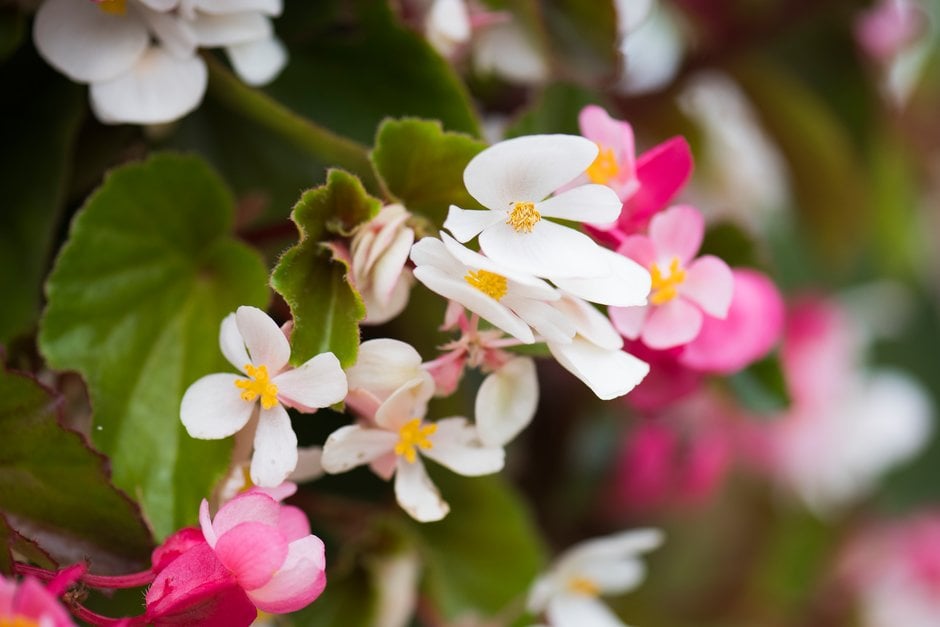Begonia Summer Jewels Mixed (S)
begonia [Summer Jewels Mixed]
A frost-tender, evergreen perennial usually grown as an annual for planting in beds and baskets or containers. Freely-branching, trailing, succulentstems bear rounded green or dark red leaves andsprays of small, single flowers in shades of white, pink and red

Size
Ultimate height
0.1–0.5 metresTime to ultimate height
1–2 yearsUltimate spread
0.1–0.5 metresGrowing conditions
Moisture
Moist but well–drainedpH
Acid, NeutralColour & scent
| Stem | Flower | Foliage | Fruit | |
| Spring | Red Green | |||
|---|---|---|---|---|
| Summer | Pink Red White | Red Green | ||
| Autumn | Red Green | |||
| Winter | Red Green |
Position
- Partial shade
Aspect
West–facing or East–facing
Exposure
Sheltered Hardiness
H1BBotanical details
- Family
- Begoniaceae
- Native to GB / Ireland
- No
- Foliage
- Evergreen
- Habit
- Bushy, Trailing
- Potentially harmful
- Ornamental bulbs - not to be eaten. Wear gloves and other protective equipment when handling. Pets: Ornamental bulbs - not to be eaten - see the HTA guide to potentially harmful plants for further information and useful contact numbers
- Genus
Begonia can be annuals, evergreen or deciduous perennials or shrubs, with fibrous, tuberous or rhizomatous roots and usually asymmetrical leaves, often strikingly patterned, and small or large flowers, both male and female in the same cluster
- Name status
Trade
- Horticultural Group
- Semperflorens-Cultorum begonias are fibrous-rooted evergreen perennials, much used for summer bedding, with rounded, often attractively coloured leaves, and sprays of single or double flowers 1-2.5cm across in summer or throughout the year
How to grow
Cultivation
Grow in fertile, well-drained, neutral to slightly acid soil in partial shade. See Begonias: outdoors for further advice.
Propagation
Propagate by seed or stem cuttings
Suggested planting locations and garden types
- Cottage and informal garden
- City and courtyard gardens
- Patio and container plants
- Flower borders and beds
Pruning
Cut back after flowering
Pests
May be susceptible to caterpillars, mealy bugs, mites, glasshouse thrips, vine weevil and aphids
Diseases
May be susceptible to grey moulds, powdery mildews, stem rot and rhizome rot
Get involved
The Royal Horticultural Society is the UK’s leading gardening charity. We aim to enrich everyone’s life through plants, and make the UK a greener and more beautiful place.